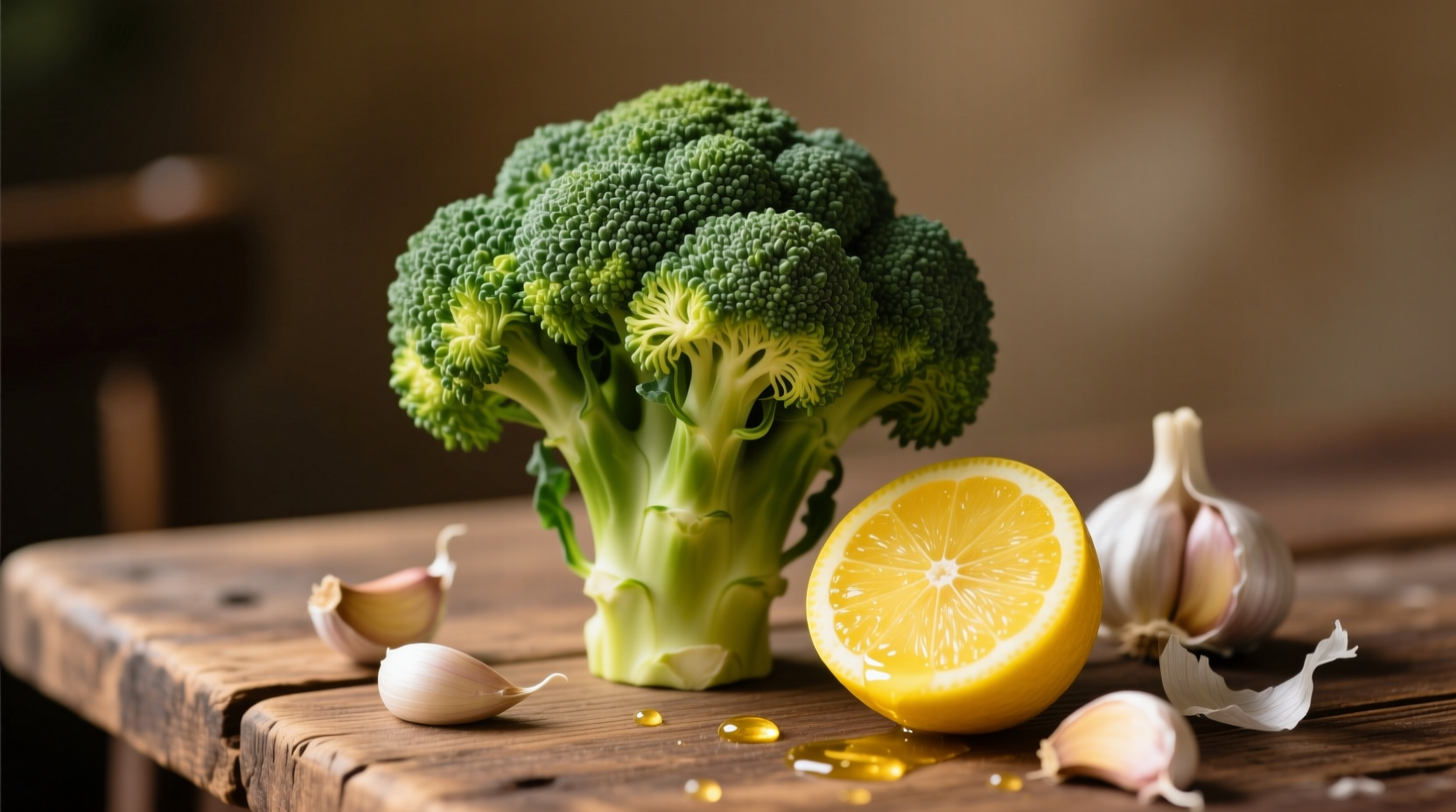Perfectly cooked broccoli with lemon and garlic delivers crisp-tender texture and vibrant flavors in just 20 minutes. This simple side dish maximizes nutrient retention while creating restaurant-quality results through proper blanching technique, optimal garlic timing, and fresh lemon zest integration.
Broccoli with lemon and garlic transforms this humble vegetable into a show-stopping side dish that balances earthy, bright, and aromatic notes. As a professional chef who's taught thousands of home cooks, I've perfected this preparation method to solve the most common broccoli problems: mushy texture, bitter aftertaste, and flat flavor profiles. The secret lies in understanding the science behind the cooking process and ingredient interactions.
The Flavor Science Behind This Classic Combination
Broccoli naturally contains glucosinolates that create its characteristic bitter notes when cooked. Garlic's allicin compounds and lemon's citric acid work synergistically to neutralize these bitter compounds while enhancing the vegetable's natural sweetness. According to research published in the Journal of Food Science, the optimal temperature for preserving broccoli's sulforaphane (a powerful antioxidant) is between 160-180°F (71-82°C) - precisely the range achieved through our recommended blanching and sauté technique.
| Flavor Component | Chemical Interaction | Practical Application |
|---|---|---|
| Broccoli bitterness | Glucosinolates break down at high heat | Blanch 2 minutes max to preserve nutrients |
| Garlic aroma | Allicin degrades above 140°F (60°C) | Add garlic during final 60 seconds of cooking |
| Lemon brightness | Citric acid enhances flavor perception | Add zest before cooking, juice after |
Ingredient Selection Guide
Not all broccoli performs equally in this preparation. Choose dark green florets with tight clusters and firm stalks. The USDA recommends selecting broccoli with minimal yellowing, which indicates age and nutrient loss. For garlic, fresh medium cloves provide the best balance of pungency and sweetness - avoid pre-minced varieties which contain preservatives that alter flavor development. When selecting lemons, choose those with thin skins and heavy weight for their size, indicating higher juice content.

Step-by-Step Cooking Method
Prep time: 5 minutes | Cook time: 15 minutes | Servings: 4
Essential Equipment
- Large pot for blanching
- Ice bath container
- Large skillet (stainless steel preferred)
- Zester or microplane
Ingredients
- 1 large head broccoli (about 1.5 lbs)
- 3 tablespoons extra-virgin olive oil
- 4 medium garlic cloves, thinly sliced
- Zest of 1 lemon
- 2 tablespoons fresh lemon juice
- ½ teaspoon sea salt
- ¼ teaspoon freshly ground black pepper
Professional Technique
- Prep broccoli: Cut florets into uniform 1.5-inch pieces, peel and slice stalks into ¼-inch rounds
- Blanch properly: Boil 1 gallon water with 2 tablespoons salt, cook broccoli 90 seconds, immediately transfer to ice bath
- Dry thoroughly: Pat completely dry with clean kitchen towels (critical for proper searing)
- Heat skillet: Warm olive oil over medium-high until shimmering (not smoking)
- Add garlic: Cook 45 seconds until fragrant but not browned
- Sear broccoli: Add broccoli in single layer, cook undisturbed 3 minutes for caramelization
- Finish: Toss with lemon zest, juice, salt and pepper. Cook 60 seconds more.
Avoid These Common Mistakes
Most home cooks make these critical errors that ruin broccoli with lemon and garlic:
- Overcooking during blanching - Broccoli continues cooking from residual heat, so 90 seconds is maximum
- Adding garlic too early - Garlic burns at 325°F (163°C), creating bitter compounds
- Using bottled lemon juice - Contains preservatives that create off-flavors when heated
- Skipping the ice bath - Stops cooking process to preserve crisp-tender texture
Nutritional Benefits You're Getting
This preparation method maximizes nutrient retention while enhancing absorption. According to USDA FoodData Central, one serving (about 150g) provides:
- 135% of your daily vitamin C needs
- 78% of vitamin K for bone health
- 3.5g of dietary fiber
- Significant amounts of folate and potassium
The olive oil in this recipe increases absorption of fat-soluble vitamins (A, E, K) by up to 400% compared to steaming alone, as documented in the American Journal of Clinical Nutrition. The lemon juice further enhances iron absorption from the broccoli.
Variations for Different Dietary Needs
This versatile preparation adapts beautifully to various dietary requirements:
- Vegan option: Add 2 tablespoons nutritional yeast for cheesy notes
- Low-sodium version: Replace salt with ¼ teaspoon celery seed
- Extra protein: Toss with ¼ cup toasted pine nuts before serving
- Keto adaptation: Increase olive oil to 4 tablespoons and add lemon-infused olive oil
Storage and Reheating Guidelines
Store leftovers in an airtight container for up to 3 days. For best results when reheating:
- Stovetop method: Warm in skillet with 1 teaspoon water over medium heat 2-3 minutes
- Avoid microwaving: Creates uneven heating and mushy texture
- Revive texture: Finish with fresh lemon zest and a drizzle of high-quality olive oil
Perfect Pairing Suggestions
This broccoli preparation complements a wide range of main courses:
- With poultry: Roast chicken with herbs de Provence
- With seafood: Pan-seared salmon with dill
- With vegetarian: Lemon-herb quinoa and white beans
- With red meat: Filet mignon with red wine reduction











 浙公网安备
33010002000092号
浙公网安备
33010002000092号 浙B2-20120091-4
浙B2-20120091-4